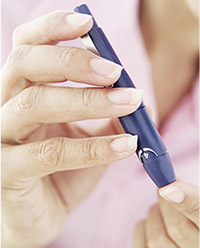In response to the growing health burden of diabetes, the diabetes community has three choices: prevent diabetes; cure diabetes; and improve the quality of care of people with diabetes to prevent devastating complications. All three approaches are actively being pursued by the US Department of Health and Human Services.
Both the National Institutes of Health (NIH) and the Centers for Disease Control and Prevention (CDC) are involved in prevention activities. The NIH is involved in research to cure both type 1 and type 2 diabetes, especially type 1. CDC focuses most of its programs on making sure that the proven science to prevent complications is put into daily practice for people with diabetes. The basic idea is that if all the important research and science are not applied meaningfully in the daily lives of people with diabetes, then the research is, in essence, wasted.
Several approaches to “cure” diabetes are currently under investigation:
• Pancreas transplantation
• Islet cell transplantation (islet cells produce insulin)
• Artificial pancreas development
• Genetic manipulation (fat or muscle cells that don’t normally make insulin have a human insulin gene inserted — then these “pseudo” islet cells are transplanted into people with type 1 diabetes).
Each of these approaches still has a lot of challenges, such as preventing immune rejection; finding an adequate number of insulin cells; keeping cells alive; and others. But progress is being made in all areas.
Courtesy of the Center for Disease Control www.cdc.gov/diabetes/




 And Other Power Foods >
And Other Power Foods >